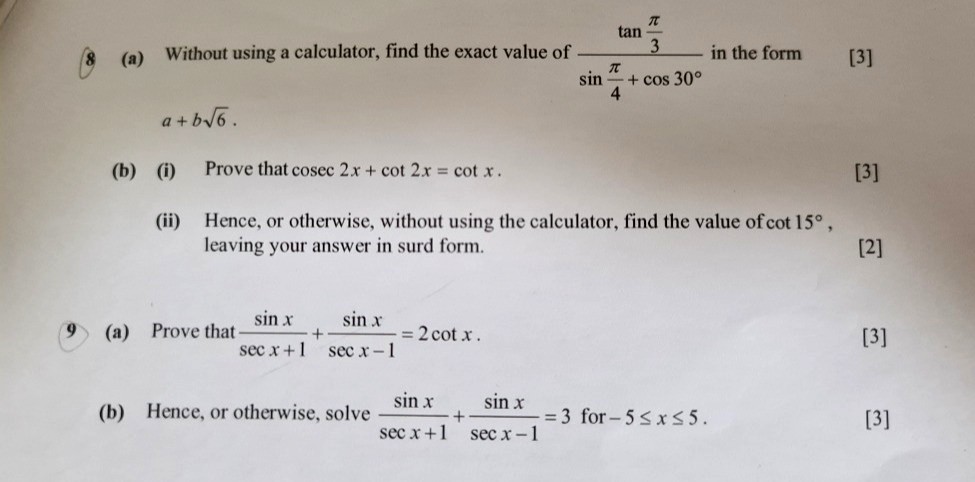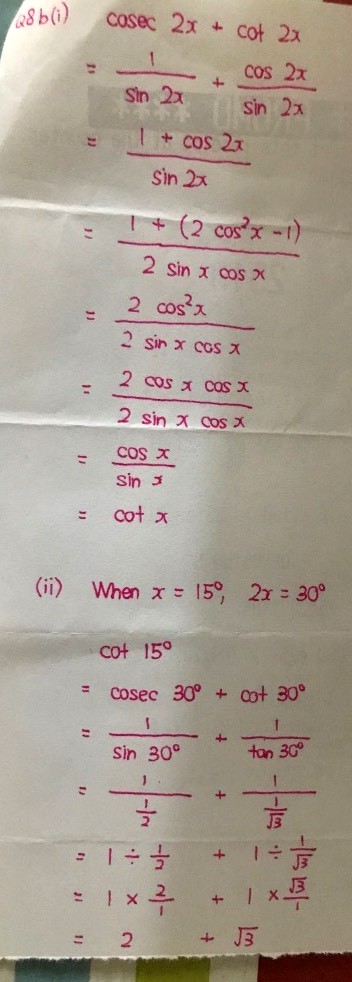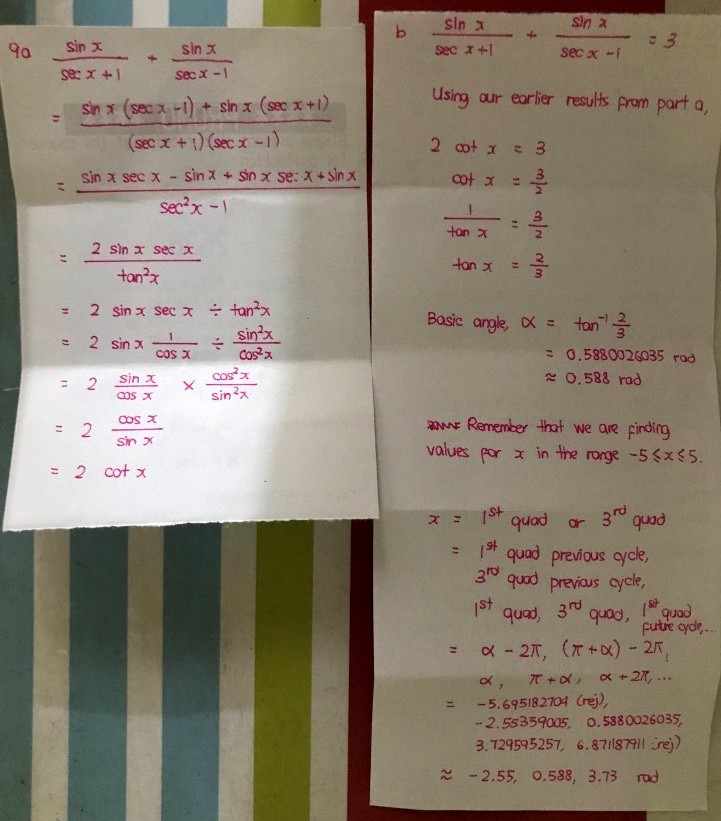Ask Singapore Homework?
Upload a photo of a Singapore homework and someone will email you the solution for free.

See 3 Answers
done
{{ upvoteCount }} Upvotes
clear
{{ downvoteCount * -1 }} Downvotes
Q8a
We need to know these things
- values of special angles
- operations of fractions
- rationalisation of surds
We need to know these things
- values of special angles
- operations of fractions
- rationalisation of surds
Date Posted:
3 years ago
done
{{ upvoteCount }} Upvotes
clear
{{ downvoteCount * -1 }} Downvotes
Q8b
As with the previous examples of identity proving, we need to use many different techniques to get us our final form. Of course, since the final form has an angle of x and the initial form has an angle of 2x, it’s clear that the double angle formula must be used.
For the second part, we use the proved identity in part i to help us evaluate cot 15.
As with the previous examples of identity proving, we need to use many different techniques to get us our final form. Of course, since the final form has an angle of x and the initial form has an angle of 2x, it’s clear that the double angle formula must be used.
For the second part, we use the proved identity in part i to help us evaluate cot 15.
Date Posted:
3 years ago
i managed to get to the 3rd column for part(i), but for cos2x, is there any way to decide which one to use as there are 3 different choices for cos2x?
The numerator is 1 + cos 2x.
When I face this type of situation, I always choose the option which can “kill off” the “1”.
Here, the form cos 2x = 2 cos2 x - 1 is good because the “-1” kills off the “1” later on in the simplification.
Similarly, the form cos 2x = 1 - 2 sin2 x is good when we face 1 - cos 2x, because then the “1”s cancel off, leaving us with a single term in our expression.
The original form cos 2x = cos2 x - sin2 x is good when we need to factorise our expression into (cos x + sin x) (cos x - sin x) for some cancellations of the numerator and the denominator later on in the simplification.
When I face this type of situation, I always choose the option which can “kill off” the “1”.
Here, the form cos 2x = 2 cos2 x - 1 is good because the “-1” kills off the “1” later on in the simplification.
Similarly, the form cos 2x = 1 - 2 sin2 x is good when we face 1 - cos 2x, because then the “1”s cancel off, leaving us with a single term in our expression.
The original form cos 2x = cos2 x - sin2 x is good when we need to factorise our expression into (cos x + sin x) (cos x - sin x) for some cancellations of the numerator and the denominator later on in the simplification.
for part a, how do we come to conclusions on which method to use
Now for this one, there are lots of techniques available. I notice that the two denominators happen to be conjugates of each other, so combining into a single fraction is possible.
Moreover, the two numerators are the same, meaning that there is going to be some simplification ensuing after that.
And the best part is, after combining into a single fraction, the denominator can be expanded into two terms, and just nice the two-term combination is an identity which can be simplified into a single term. This allows the numerator and the denominator to be simplified even more easily.
For these reasons, this is a good approach to look at.
Moreover, the two numerators are the same, meaning that there is going to be some simplification ensuing after that.
And the best part is, after combining into a single fraction, the denominator can be expanded into two terms, and just nice the two-term combination is an identity which can be simplified into a single term. This allows the numerator and the denominator to be simplified even more easily.
For these reasons, this is a good approach to look at.







